Home
/
Unlabelled
/
Just who brought civilization to a primitive land.. Made IN America by Western Europeans....BAM!
Just who brought civilization to a primitive land.. Made IN America by Western Europeans....BAM!
Made IN America by Western Europeans....BAM!
Famous Inventors
 A list of famous inventors from Archimedes to Tim Berners-Lee.
A list of famous inventors from Archimedes to Tim Berners-Lee.1001 Inventions That Changed the World at Amazon. A look into the numerous inventions we now take for granted by great inventors such as Archimedes, Galileo, Leonardo da Vinci, Louis Pasteur, Marie Curie, Alan Turing and Steve Jobs.
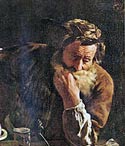 Archimedes (287 BCE – c.
212 BCE) Archimedes of Syracuse was an ancient Greek mathematician,
physicist, engineer, inventor, and astronomer. Amongst other things he
calculated pi and developed the Archimedes screw for lifting up water
from mines or wells.
Archimedes (287 BCE – c.
212 BCE) Archimedes of Syracuse was an ancient Greek mathematician,
physicist, engineer, inventor, and astronomer. Amongst other things he
calculated pi and developed the Archimedes screw for lifting up water
from mines or wells.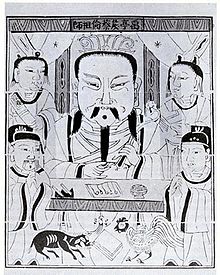 Cai Lun (50–121
CE), Chinese inventor of paper. Cai Lun was a Chinese political
administrator credited with inventing modern paper and inventing the
paper-making process. His invention included the use of raw materials
such as bark, hemp, silk and fishing net. The sheets of fibre were
suspended in water before removing for drying.
Cai Lun (50–121
CE), Chinese inventor of paper. Cai Lun was a Chinese political
administrator credited with inventing modern paper and inventing the
paper-making process. His invention included the use of raw materials
such as bark, hemp, silk and fishing net. The sheets of fibre were
suspended in water before removing for drying.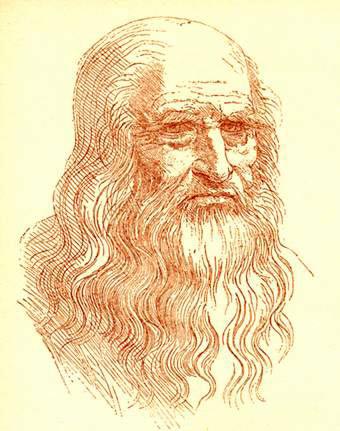 Leonardo Da Vinci (1452–1519) Italian
artist, scientist and polymath. Da Vinci invented a huge range of
machines and drew models that proved workable 3-500 years later. These
included prototype parachutes, tanks, flying machines and single-span
bridges. More practical inventions included an optical lens grinder and
various hydraulic machines.
Leonardo Da Vinci (1452–1519) Italian
artist, scientist and polymath. Da Vinci invented a huge range of
machines and drew models that proved workable 3-500 years later. These
included prototype parachutes, tanks, flying machines and single-span
bridges. More practical inventions included an optical lens grinder and
various hydraulic machines.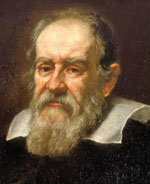 Galileo
(1564–1642) Italian scientist. Galileo developed a powerful telescope
and confirmed revolutionary theories about the nature of the world. Also
developed an improved compass.
Galileo
(1564–1642) Italian scientist. Galileo developed a powerful telescope
and confirmed revolutionary theories about the nature of the world. Also
developed an improved compass.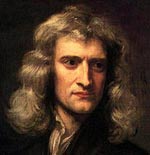 Sir Isaac Newton (1642–1726)
English scientist. Newton invented the reflecting telescope. This
greatly improved the capacity of telescopes and reduced optical
distortion. Newton was also a great physicist and astronomer.
Sir Isaac Newton (1642–1726)
English scientist. Newton invented the reflecting telescope. This
greatly improved the capacity of telescopes and reduced optical
distortion. Newton was also a great physicist and astronomer.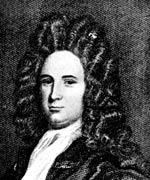 Thomas Savery (c. 1650–1715) English inventor. Savery
patented one of the first steam engines which was pioneered for use in
pumping water from mines. This original Savery steam engine was basic,
but it was used as a starting point in later developments of the steam
engine.
Thomas Savery (c. 1650–1715) English inventor. Savery
patented one of the first steam engines which was pioneered for use in
pumping water from mines. This original Savery steam engine was basic,
but it was used as a starting point in later developments of the steam
engine.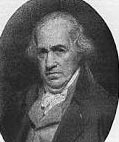 Thomas Newcomen (1664–1729) English inventor who created
the first practical steam engine for pumping water from mines. He
worked with Savery’s initial design, but significantly improved it,
using atmospheric pressure which was safer and more effective for use in
mines to remove water.
Thomas Newcomen (1664–1729) English inventor who created
the first practical steam engine for pumping water from mines. He
worked with Savery’s initial design, but significantly improved it,
using atmospheric pressure which was safer and more effective for use in
mines to remove water.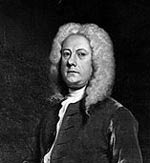 Jethro Tull (1674–1741) English agricultural
entrepreneur. Tull invented the seed drill and horse-drawn hoe. The seed
drill improved the efficiency of farming and led to increased yields.
It was an important invention in the agricultural revolution which
increased yields prior to the industrial revolution.
Jethro Tull (1674–1741) English agricultural
entrepreneur. Tull invented the seed drill and horse-drawn hoe. The seed
drill improved the efficiency of farming and led to increased yields.
It was an important invention in the agricultural revolution which
increased yields prior to the industrial revolution.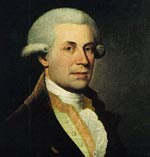 Abraham Darby (1678–1717) English Quaker, inventor and
businessman. Darby developed a process for producing large quantities of
pig iron from coke. Coke smelted iron was a crucial raw material in the
industrial revolution.
Abraham Darby (1678–1717) English Quaker, inventor and
businessman. Darby developed a process for producing large quantities of
pig iron from coke. Coke smelted iron was a crucial raw material in the
industrial revolution.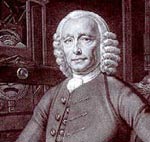 John Harrison (1693–1776)
English carpenter and clockmaker. He invented a device for measuring
longitude at sea. This was a crucial invention to improve the safety of
navigating the oceans.
John Harrison (1693–1776)
English carpenter and clockmaker. He invented a device for measuring
longitude at sea. This was a crucial invention to improve the safety of
navigating the oceans.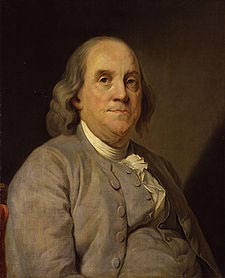 Benjamin Franklin
(1705–1790) American polymath who discovered electricity and invented
the Franklin stove, the lightning rod and bifocals. Franklin was also an
American statesman and an influential figure in the development of
modern America.
Benjamin Franklin
(1705–1790) American polymath who discovered electricity and invented
the Franklin stove, the lightning rod and bifocals. Franklin was also an
American statesman and an influential figure in the development of
modern America.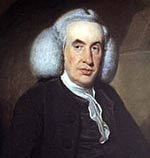 William Cullen (1710–1790) Scottish physician
and chemist. He is credited with inventing the basis for the first
artificial refrigerator, although it took others to make his designs
suitable for practical use.
William Cullen (1710–1790) Scottish physician
and chemist. He is credited with inventing the basis for the first
artificial refrigerator, although it took others to make his designs
suitable for practical use.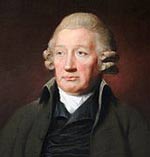 John Wilkinson (1728–1808) English industrialist. John
‘Iron Mad’ Wilkinson developed the manufacture and use of cast iron.
These precision-made cast iron cylinders were important in steam
engines.
John Wilkinson (1728–1808) English industrialist. John
‘Iron Mad’ Wilkinson developed the manufacture and use of cast iron.
These precision-made cast iron cylinders were important in steam
engines.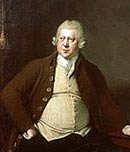 Sir Richard Arkwright (1732–1792) English entrepreneur
and ‘father of the industrial revolution.’ Arkwright was a leading
pioneer in the spinning industry. He invented the spinning frame and was
successful in using this in mass-scale factory production.
Sir Richard Arkwright (1732–1792) English entrepreneur
and ‘father of the industrial revolution.’ Arkwright was a leading
pioneer in the spinning industry. He invented the spinning frame and was
successful in using this in mass-scale factory production.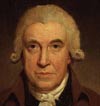 James Watt
(1736–1819) Scottish inventor of the steam engine, which was suitable
for use in trains. His invention of a separate condensing chamber
greatly improved the efficiency of steam. It enabled the steam engine to
be used for a greater range of purpose than just pumping water.
James Watt
(1736–1819) Scottish inventor of the steam engine, which was suitable
for use in trains. His invention of a separate condensing chamber
greatly improved the efficiency of steam. It enabled the steam engine to
be used for a greater range of purpose than just pumping water.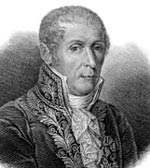 Alessandro Volta (1745–1827), Italian physicist,
credited with inventing the battery. Volta invented the first
electrochemical battery cell. It used zinc, copper and an electrolyte,
such as sulphuric acid and water.
Alessandro Volta (1745–1827), Italian physicist,
credited with inventing the battery. Volta invented the first
electrochemical battery cell. It used zinc, copper and an electrolyte,
such as sulphuric acid and water.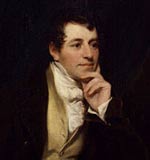 Sir Humphrey Davy (1778–1829) English inventor
of the Davy lamp. The lamp could be used by miners in areas where
methane gas existed because the design prevented a flame escaping the
fine gauze.
Sir Humphrey Davy (1778–1829) English inventor
of the Davy lamp. The lamp could be used by miners in areas where
methane gas existed because the design prevented a flame escaping the
fine gauze.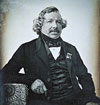 Louis Daguerre (1787 – 1851) French artist
and inventor who developed the Daguerreotype of photography. His
innovative method of taking photographs brought photography within the
reach of ordinary people.
Louis Daguerre (1787 – 1851) French artist
and inventor who developed the Daguerreotype of photography. His
innovative method of taking photographs brought photography within the
reach of ordinary people.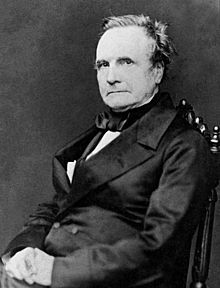 Charles Babbage
(1791–1871) English mathematician and inventor. Babbage created the
first mechanical computer, which proved to be the prototype for future
computers. Considered to be the ‘Father of Computers,’ despite not
finishing a working model.
Charles Babbage
(1791–1871) English mathematician and inventor. Babbage created the
first mechanical computer, which proved to be the prototype for future
computers. Considered to be the ‘Father of Computers,’ despite not
finishing a working model.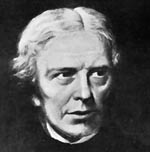 Michael Faraday (1791–1867)
English scientist who helped convert electricity into a format that
could be easily used. Faraday discovered benzene and also invented an
early form of the Bunsen burner.
Michael Faraday (1791–1867)
English scientist who helped convert electricity into a format that
could be easily used. Faraday discovered benzene and also invented an
early form of the Bunsen burner.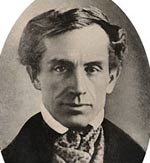 Samuel Morse (1791–1872) American inventor Morse
used principles of Jackson’s electromagnet to develop a single
telegraph wire. He also invented Morse code, a method of communicating
via telegraph.
Samuel Morse (1791–1872) American inventor Morse
used principles of Jackson’s electromagnet to develop a single
telegraph wire. He also invented Morse code, a method of communicating
via telegraph.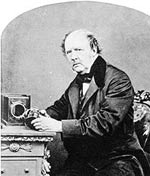 William Henry Fox Talbot (1800–1877) British
Victorian pioneer of photography. He invented the first negative, which
could make several prints. He is known for inventing the calotype
process (using Silver Chloride) of taking photographs.
William Henry Fox Talbot (1800–1877) British
Victorian pioneer of photography. He invented the first negative, which
could make several prints. He is known for inventing the calotype
process (using Silver Chloride) of taking photographs.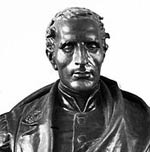 Louis Braille (1809–1852) French inventor. Louis
Braille was blinded in a childhood accident. He developed the Braille
system of reading for the blind. He also developed a musical Braille,
for reading music scores.
Louis Braille (1809–1852) French inventor. Louis
Braille was blinded in a childhood accident. He developed the Braille
system of reading for the blind. He also developed a musical Braille,
for reading music scores.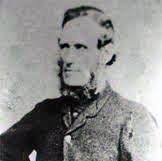 Kirkpatrick Macmillan (1812–1878) Scottish
inventor of the pedal bicycle. Kirkpatrick’s contribution was to make a
rear wheel driven bicycle through the use of a chain, giving the basic
design for the bicycle as we know it today.
Kirkpatrick Macmillan (1812–1878) Scottish
inventor of the pedal bicycle. Kirkpatrick’s contribution was to make a
rear wheel driven bicycle through the use of a chain, giving the basic
design for the bicycle as we know it today.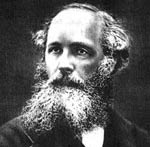 James Clerk Maxwell
(1831–1879) Scottish physicist and inventor. Maxwell invented the first
process for producing colour photography. Maxwell was also considered
one of the greatest physicists of the millennium.
James Clerk Maxwell
(1831–1879) Scottish physicist and inventor. Maxwell invented the first
process for producing colour photography. Maxwell was also considered
one of the greatest physicists of the millennium.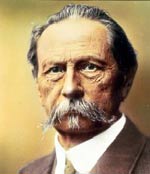 Karl Benz (1844–1929), German inventor and
businessman. Benz developed the petrol-powered car. In 1879, Benz
received his first patent for a petrol-powered internal combustion
engine, which made an automobile car practical. Benz also became a
successful manufacturer.
Karl Benz (1844–1929), German inventor and
businessman. Benz developed the petrol-powered car. In 1879, Benz
received his first patent for a petrol-powered internal combustion
engine, which made an automobile car practical. Benz also became a
successful manufacturer.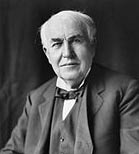 Thomas Edison (1847–1931)
American inventor who filed over 1,000 patents. He developed and
innovated a wide range of products from the electric light bulb to the
phonograph and motion picture camera. One of the greatest inventors of
all time.
Thomas Edison (1847–1931)
American inventor who filed over 1,000 patents. He developed and
innovated a wide range of products from the electric light bulb to the
phonograph and motion picture camera. One of the greatest inventors of
all time.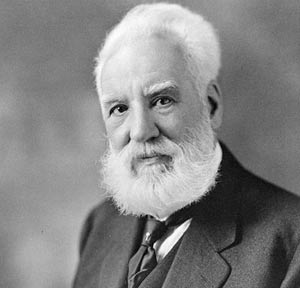 Alexander Bell
(1847–1922) Scottish scientist credited with inventing the first
practical telephone. Also worked on optical telecommunications,
aeronautics and hydrofoils.
Alexander Bell
(1847–1922) Scottish scientist credited with inventing the first
practical telephone. Also worked on optical telecommunications,
aeronautics and hydrofoils.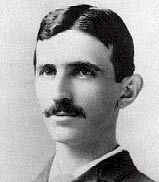 Nikola Tesla
(1856–1943) American Physicist who invented fluorescent lighting, the
Tesla coil, the induction motor, 3-phase electricity and AC electricity.
Nikola Tesla
(1856–1943) American Physicist who invented fluorescent lighting, the
Tesla coil, the induction motor, 3-phase electricity and AC electricity.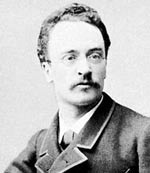 Rudolf Diesel (1858–1913), German inventor of
the Diesel engine. Diesel sought to build an engine which had much
greater efficiency. This led him to develop a diesel-powered combustion
engine.
Rudolf Diesel (1858–1913), German inventor of
the Diesel engine. Diesel sought to build an engine which had much
greater efficiency. This led him to develop a diesel-powered combustion
engine.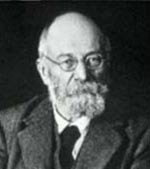 Édouard Michelin (1859–1940), French inventor of
a pneumatic tire. John Dunlop invented the first practical pneumatic
tyre in 1887. Michelin improved on this initial design to develop his
own version in 1889.
Édouard Michelin (1859–1940), French inventor of
a pneumatic tire. John Dunlop invented the first practical pneumatic
tyre in 1887. Michelin improved on this initial design to develop his
own version in 1889.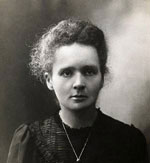 Marie Curie (1867–1934) Polish-born French chemist and physicist. Curie discovered Radium and helped make use of radiation and X-rays.
Marie Curie (1867–1934) Polish-born French chemist and physicist. Curie discovered Radium and helped make use of radiation and X-rays.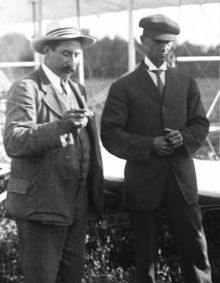 The Wright Brothers (1871–1948) American inventors who successfully designed, built and flew the first powered aircraft in 1903.
The Wright Brothers (1871–1948) American inventors who successfully designed, built and flew the first powered aircraft in 1903.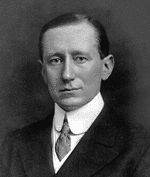 Guglielmo Marconi
(1874-1937) Italian inventor of the radio. Marconi developed wireless
transmitter signals using electromagnetic waves. This developed into the
radio.
Guglielmo Marconi
(1874-1937) Italian inventor of the radio. Marconi developed wireless
transmitter signals using electromagnetic waves. This developed into the
radio.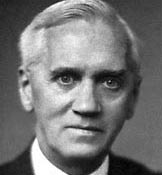 Alexander Fleming (1881–1955), Scottish scientist. Fleming discovered the antibiotic penicillin by accident from the mould Penicillium Notatum in 1928.
Alexander Fleming (1881–1955), Scottish scientist. Fleming discovered the antibiotic penicillin by accident from the mould Penicillium Notatum in 1928.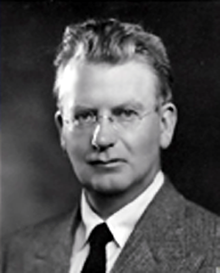 John Logie Baird (1888–1946) Scottish inventor who invented the television and the first recording device.
John Logie Baird (1888–1946) Scottish inventor who invented the television and the first recording device.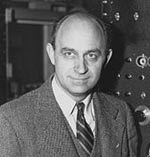 Enrico Fermi
(1901–1954) Italian scientist who built and developed the nuclear
reactor, which led to the creation of atomic bombs and nuclear power.
Fermi also made important discoveries in induced radioactivity.
Enrico Fermi
(1901–1954) Italian scientist who built and developed the nuclear
reactor, which led to the creation of atomic bombs and nuclear power.
Fermi also made important discoveries in induced radioactivity.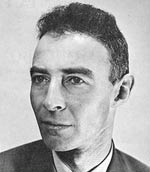 J. Robert Oppenheimer (1904–1967), United States
– Atomic bomb. Oppenheimer was in charge of the Manhattan project which
led to the creation of the first atomic bomb, later dropped in Japan.
He later campaigned against his own invention.
J. Robert Oppenheimer (1904–1967), United States
– Atomic bomb. Oppenheimer was in charge of the Manhattan project which
led to the creation of the first atomic bomb, later dropped in Japan.
He later campaigned against his own invention.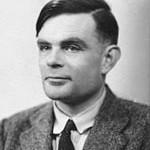 Alan Turing
(1912–1954) English 20th century mathematician, pioneer of computer
science. He developed the Turing machine, capable of automating
processes. It could be adapted to simulate the logic of any computer
algorithm.
Alan Turing
(1912–1954) English 20th century mathematician, pioneer of computer
science. He developed the Turing machine, capable of automating
processes. It could be adapted to simulate the logic of any computer
algorithm.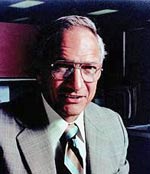 Robert Noyce (1927–1990) American 20th-century
electrical engineer. Along with Jack Kilby, he invented the microchip or
integrated circuit. He filed for a patent in 1959. The microchip fueled
the computer revolution.
Robert Noyce (1927–1990) American 20th-century
electrical engineer. Along with Jack Kilby, he invented the microchip or
integrated circuit. He filed for a patent in 1959. The microchip fueled
the computer revolution.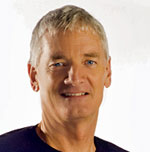 James Dyson (1947– ) British entrepreneur. He
developed the bag-less vacuum cleaner using Dual Cyclone action. His
Dyson company has also invented revolutionary hand dryers.
James Dyson (1947– ) British entrepreneur. He
developed the bag-less vacuum cleaner using Dual Cyclone action. His
Dyson company has also invented revolutionary hand dryers.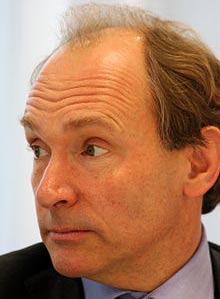 Tim Berners-Lee
(1955– ) British computer scientist. Tim Berners-Lee is credited with
inventing the World Wide Web, which enabled the internet to display
websites viewable on internet browsers. He developed the http:// protocol for the internet and made the world wide web freely available.
Tim Berners-Lee
(1955– ) British computer scientist. Tim Berners-Lee is credited with
inventing the World Wide Web, which enabled the internet to display
websites viewable on internet browsers. He developed the http:// protocol for the internet and made the world wide web freely available.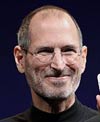 Steve Jobs (1955–2011) American entrepreneur and
developer. Jobs helped revolutionise personal computer devices with the
iPod, iPad, Macbook and iPhone. He is credited with inventing the new
wave of hand-held personal computer devices.
Steve Jobs (1955–2011) American entrepreneur and
developer. Jobs helped revolutionise personal computer devices with the
iPod, iPad, Macbook and iPhone. He is credited with inventing the new
wave of hand-held personal computer devices.https://www.biographyonline.net/scientists/inventors.html
Subscribe to:
Post Comments (Atom)











































Post a Comment